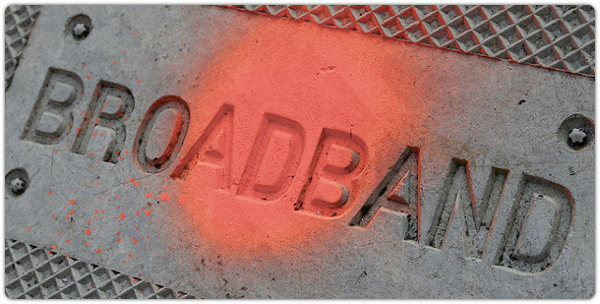Fibre helps broadband to forge ahead
- Subscribe to RSS Feed
- Mark as New
- Mark as Read
- Bookmark
- Subscribe
- Printer Friendly Page
- Report to Moderator
- Plusnet Community
- :
- Plusnet Blogs
- :
- Fibre helps broadband to forge ahead
Fibre helps broadband to forge ahead
 According to the latest news there's now more than 600 million of us signed up for broadband. And experts reckon one of the reasons more of us are signing up is fibre. Just keep reading for the latest stats and what they mean… A recent report by the Broadband Forum - an international non-profit consortium of more than 200 companies in the telecom equipment, computing, networking and service provider industries - has revealed that more than 600 million people worldwide are now subscribing to broadband services. And that figure's still rising rapidly - in the first quarter of 2012, more than 16 million extra lines were added. That's 2.7% more than in the previous quarter, which saw an extra 14 million new lines being registered. So what's driving this increase? And what part is super-fast fibre optic broadband playing? We thought we'd delve a little deeper into the headline figures to find out.
According to the latest news there's now more than 600 million of us signed up for broadband. And experts reckon one of the reasons more of us are signing up is fibre. Just keep reading for the latest stats and what they mean… A recent report by the Broadband Forum - an international non-profit consortium of more than 200 companies in the telecom equipment, computing, networking and service provider industries - has revealed that more than 600 million people worldwide are now subscribing to broadband services. And that figure's still rising rapidly - in the first quarter of 2012, more than 16 million extra lines were added. That's 2.7% more than in the previous quarter, which saw an extra 14 million new lines being registered. So what's driving this increase? And what part is super-fast fibre optic broadband playing? We thought we'd delve a little deeper into the headline figures to find out.
Broadband takes the world by storm
OK, so part of the growth in broadband use is down to high take-up rates far away from Blighty. According to the Broadband Forum report [PDF] Russia's showing the broadband love, with an annual growth rate of 27.43%. The Ukraine wasn't far behind, with 26.82% extra broadband lines added in the last 12 months, and India and Brazil are embracing broadband too, racking up annual growth rates of 19.11% and 18.07% respectively.
But what about Blighty?
Broadband use isn't just increasing abroad though. In the UK, the amount of new lines being added increased by 5.94% in the same period - that's 1,182, 500 new lines in total.
The future's fibre…and streaming's in full flow
The report also suggests one of the main things fuelling broadband's accelerated growth is a need for speed. Super-fast fibre's becoming increasingly popular with homeowners and businesses and, in China in particular, IPTV (Internet Protocol Television) - that's watching live, time-shifted and on demand TV online - is driving the switch to high-speed broadband. IPTV use is also becoming more common in the US and France - so experts will be keeping a close eye on this in the future.
Still not sure about how this technology works? Find out more in our handy guide called what is fibre optic broadband
What do you use your broadband for? Are you thinking about switching to fibre-optic broadband? Please leave a comment and let us know …
